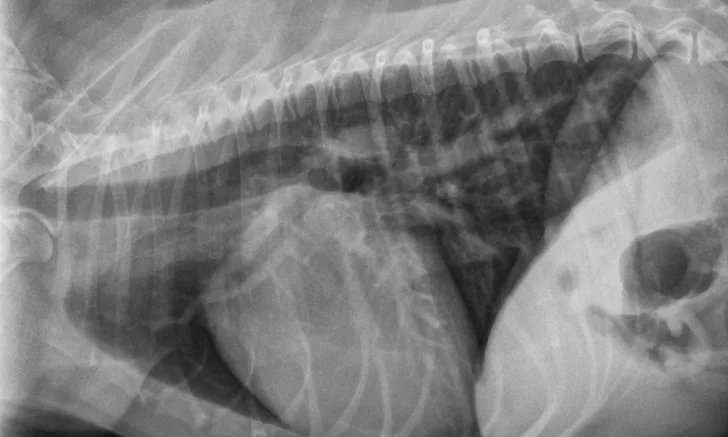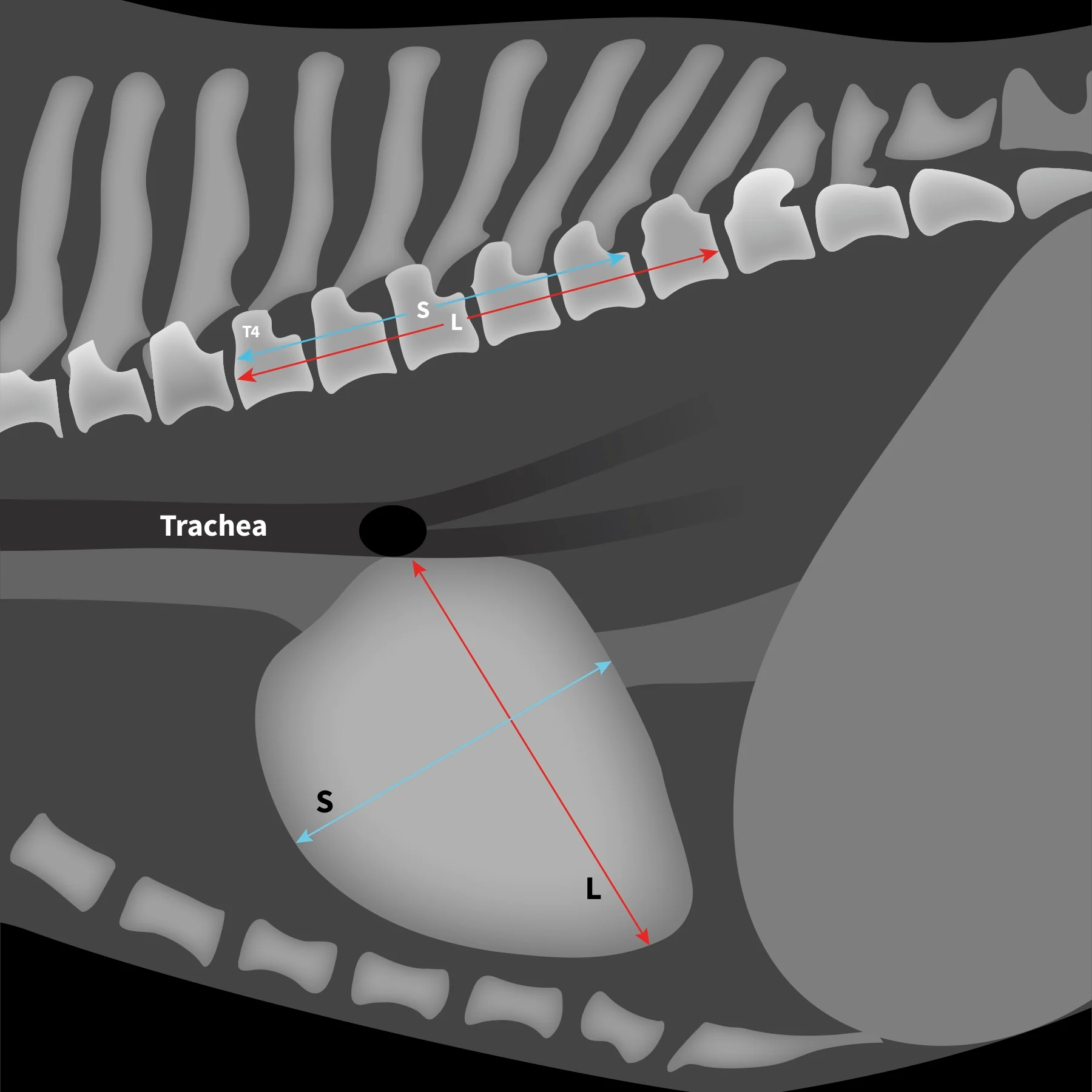Quiz: Calculate the Vertebral Heart Scale
Denaé Campanale, DVM, MPH, Cornell University Hospital for Animals
Amara H. Estrada, DVM, DACVIM (Cardiology), University of Florida

Vertebral heart scale (VHS) is an objective measurement of cardiac size on thoracic radiographs against recorded normal measurements to assess for cardiomegaly.
When used in combination with a thorough medical history and physical examination, VHS is useful for identifying possible heart disease and monitoring changes in heart size over time in a patient with diagnosed cardiac disease. In dogs with progressively increasing heart size, VHS has been demonstrated to correlate well with other methods of tracking cardiac changes, including echocardiography and ECG, and is considered a superior method by some.1
A lateral radiographic view should be assessed to calculate VHS. Patients can be positioned in right or left lateral recumbency; serial images should be taken on the same side.2 To calculate the VHS, the height of the heart should first be measured from the bottom of the left mainstem bronchus to the apex of the heart, using calipers. This measurement is represented by L in Figure 1. Then, the width of the heart should be measured at its widest point perpendicular to the first measurement. This measurement is represented by S in Figure 1.
These two caliper measurements are then physically compared against the thoracic vertebrae. Starting at the cranial edge of the fourth thoracic vertebra, the caliper measurements of the heart should be matched against the vertebrae. The number of vertebrae that equal the distance of each measurement is represented by L and S. The sum of the 2 measurements (L + S) in vertebrae equals the VHS. For more information on measuring VHS, read our step-by-step guide here.

L is the height of the heart measured from the bottom of the left mainstem bronchus to the apex of the heart, while S is the width of the heart measured from its widest point perpendicular to the first measurement.
Breed-Specific VHS Ranges*3-10
*An earlier version of this table originally appeared in the Clinician's Brief article Vertebral Heart Scale.
PACS = picture archiving and communication system, VHS = vertebral heart scale or score